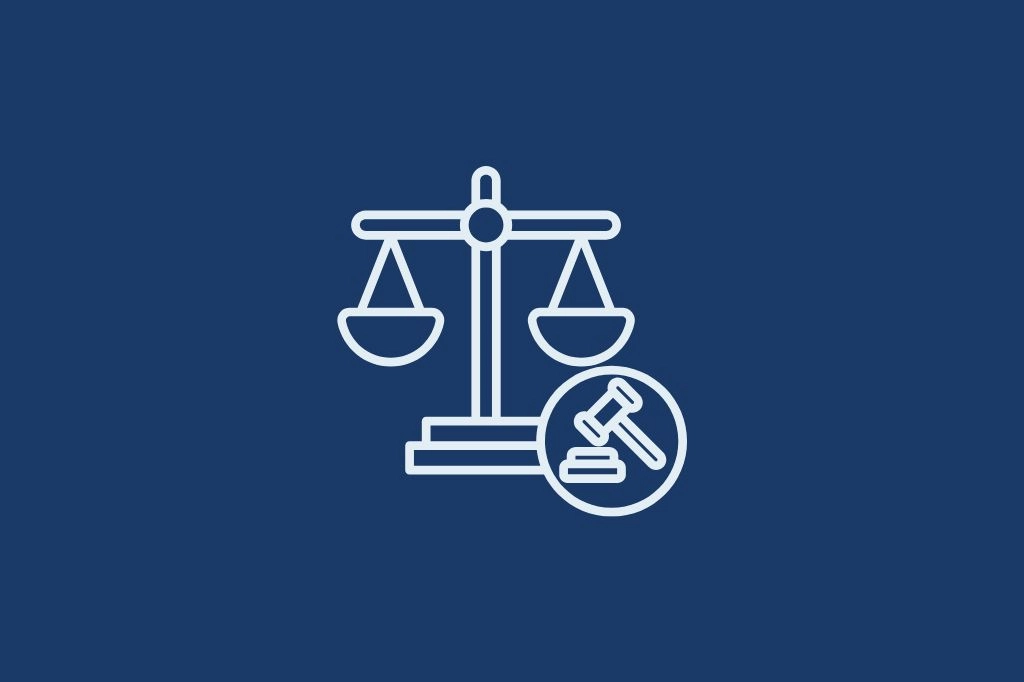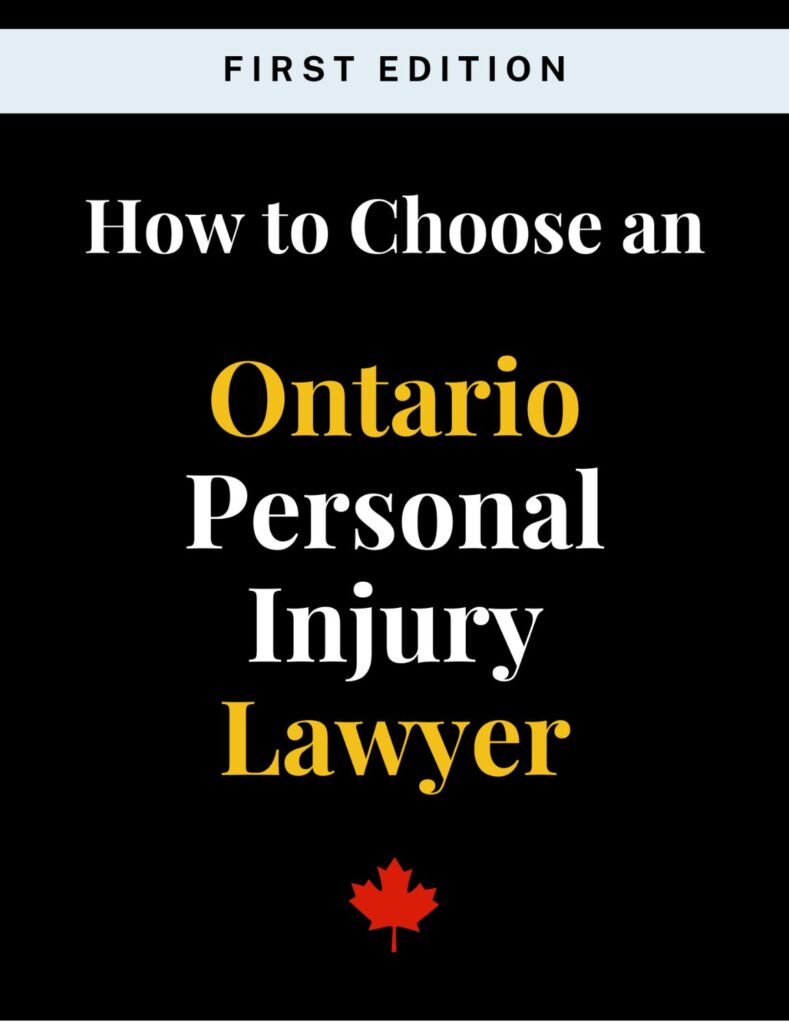Thunder Bay Neck Injury Lawyer
Find out if you have a case today.
Contact our Thunder Bay personal injury lawyers for a free consultation if you have legal questions regarding your personal injury claim.
Table of Contents
After any high-impact accident, you may be at risk of sustaining neck injuries. The most common injuries are whiplash and neck sprains, though fractures, misalignments, and disc slippage are also possible. Due to the high risk for neck injuries, you should make sure that you are checked for these potential injuries after an accident.
Whiplash is perhaps the most well-known neck injury, particularly in terms of car accidents. It can happen any time an impact causes your head to suddenly jerk forward and then back. This sudden motion causes the muscles and tendons in your neck to become strained or torn. If you are suffering from whiplash, you will experience symptoms including:
- Pain, especially when moving your head
- Decreased range of motion
- Tense or knotted neck muscles
- Tenderness in your neck
- Headaches starting at the base of your skull
Neck sprains, which are torn ligaments, may also occur after an accident in which your head jerks suddenly. Many symptoms are similar to whiplash, with the addition of muscle spasms, numbness in your arm or hand, and tingling and weakness in your arms. While you may not experience all of these symptoms, explain what you do experience to your doctor in order to ensure an accurate diagnosis.
Accidents may cause your spinal column to shift in such a way that the vertebrae are out of alignment, and may even cause damage to the discs. The discs are located between each vertebra and function both as shock absorbers and help to connect the vertebrae. Damage to these discs, then, causes pain, as well as a limited range of motion.
Fractures of the cervical vertebrae are less common but may occur, particularly when there is a direct impact to your head or neck. These injuries can have a wide variety of symptoms due to the potential involvement of spinal cord damage.
For any potential neck injury, your doctor will first do a basic physical examination in which he or she will measure your range of motion and ask you about the accident. It is likely that your doctor will also order x-rays or CT scans in order to confirm the exact nature of your injury, and especially when there are any suspected fractures or dislocations.
Treating Neck Injuries
Whiplash is relatively simple to treat, though it may take time to feel better. You will likely be advised to ice your neck, as well as to take painkillers and anti-inflammatories. In some cases, you may be advised to wear a neck collar, though these are not typically recommended Long-Term in order to keep neck muscles strong. Some physicians may also recommend massage therapy. Once your symptoms become less severe, your doctor may recommend gentle stretching to strengthen your neck and improve your range of motion.
Neck sprains are treated similarly, though doctors are more likely to prescribe a soft collar to allow your ligaments to rest. Cervical traction may also be an option for sprains. Otherwise, sprain treatment consists of the same elements as whiplash treatment.
Treatment of disc damage and fractures is more complex, as the severity and the potential involvement of the spinal cord can vary widely. More minor disc damage can be treated with rest, anti-inflammatory medications, physical therapy, and steroid injections. More severe disc damage may require surgery, particularly if there is pressure on the nerves. Fractures will require some form of immobilization, in the form of a brace for more minor fractures and including surgery and traction for more severe breaks.
LET US PUT OUR EXPERTISE TO WORK FOR YOU
Tell Us What Happened
Since 1959, we’ve helped thousands of Canadians get the compensation they deserve with their personal injury claims. One of Canada’s oldest personal injury law firms, personal injury law is exclusively what we do. Book a free consultation today with our top-rated personal injury lawyers.
Our team is available 24/7 to speak with you.

Seeking Compensation
No matter what your specific neck injury, you will certainly have medical expenses and will likely be unable to work for some time. As a result, you can seek compensation from the insurance company of the person at fault for the accident. Even if you were partially at fault, you can still collect compensation. Your total award amount will simply be reduced by the degree that you are determined to be at fault. For example, if you are 20% at fault for the accident, you can expect that your total award will be reduced by 20%.
Ideally, you will be able to file your claim with the at-fault’s insurance company, receive your payment, and move on. However, insurance companies do not work for you and will work to get you to accept less than you deserve. If you cannot come to an agreement with them, you will need to file a personal injury suit. In Ontario, you generally have two years from the date of the accident or from the date you learn that you have an injury caused by the accident to file this lawsuit. This time limit may seem longer than necessary, but remember that neck injuries, particularly whiplash, may take days, weeks, or even months to appear. The two years also include the time you may spend attempting to negotiate with the insurance company, which is not usually in a hurry to reach a resolution.
As part of your compensation, you are permitted to seek compensation for your pain and suffering. You will undoubtedly endure a significant amount of pain and suffering as a result of your accident, but it can be difficult to know its financial value. A Supreme Court ruling currently limits your compensation in this category to $392,000. This could change, though, if some area lawyers have their way. They state that the cap on pain and suffering is no longer relevant and should be eliminated, in part due to the existence of other city and provincial codes limiting recovery. Therefore, it is best to consult with an experienced Thunder Bay lawyer to arrive at a fair estimation of your pain and suffering, as well as to ensure that you comply with all legal caps on compensation.
Work With A Lawyer
Even if you feel certain that you will be able to come to an agreement with the insurance company, you would be wise to consult with our Preszler Injury Lawyers. Our lawyers may be able to ensure that your settlement is fair. Bringing your lawyer in early also speeds up the process of filing a personal injury suit if you are unable to reach an agreement since your lawyer will be up-to-date on the case.
Do you live in Thunder Bay? Here’s how we can help:
Proudly Canadian
Award Winning Personal Injury Law Firm
We are proud to be one of Canada’s oldest and long-standing personal injury law firms. Since 1959, we have been providing exceptional legal services and have established ourselves as leading personal injury lawyers in the Canadian legal community. It’s not just the awards that recognize our achievements, but also the wins we’ve achieved for thousands of Canadians with their personal injury claims.
More personal injury Topics
Here’s more information on personal injury related topics that we think you might find helpful.

accident benefits
|
December 24, 2025
Ontario Tort Claims Explained: What They Are and How They Work
Tort claims are one of the most common ways injured people in Ontario seek compensation after an accident. While negligence claims make up the majority…

personal injury
|
November 13, 2025
Pain and Suffering Damages Calculator for Ontario (2025): Thresholds and Deductible Explained
In Ontario, pain and suffering damages (also known as non-pecuniary or general damages) compensate for human losses that don’t appear on a tangible bill. For…

personal injury
|
January 23, 2024
Injured as a Worker in Ontario? A WSIB Claim Isn’t Necessarily Your Best— Or Only— Option
In Ontario, the compensation of workers who sustain injuries or illnesses in the course of their employment is governed by the Workplace Safety and Insurance…
More personal injury Video Resources
We also have some videos on the topic of personal injury claims
personal injury FAQs
Here are some commonly asked questions for personal injury claims
How long does it typically take to resolve a personal injury case in Ontario?
Timelines vary. Some cases resolve in months, while others take years if litigation becomes necessary. Factors include injury severity, available evidence, and how insurers respond.
Do I need a lawyer if the insurance company has made an offer?
Insurance companies often make low offers hoping victims will accept quickly. A lawyer reviews your case to determine whether the offer reflects your losses.
What if I was partially at fault for the accident?
You may still have a valid claim even if you believe you were partially at fault. Ontario’s laws permit you to recover compensation in cases of shared responsibility, though the final amount may reflect your portion of fault. Never assume you cannot file a claim. Let a lawyer assess the facts first.
How long does a personal injury case typically take?
That will depend on the severity of your injuries and the insurer’s willingness to negotiate.
What costs are involved in pursuing a personal injury claim?
Preszler Injury Lawyers works on contingency, so you don’t pay legal fees unless we recover compensation for you.
Can I still claim compensation if the accident happened on someone else’s property?
Yes. Property owners must maintain safe premises. If their negligence caused your injury, you may have a valid claim.
What should I bring to my free consultation?
Bring any documents you have related to the accident. This includes police reports, your driver’s licence and insurance information, the other party’s information, photos of the scene or your injuries, and any receipts for expenses like prescriptions or therapy. The more information you provide, the better we can assess your claim.
Why is it important to document my injuries and recovery process?
Keeping a simple journal helps track how your injuries affect your daily life. Note your pain levels, medical appointments, missed work or social activities, and any challenges you face with personal care or household chores. This documentation provides powerful evidence to support your claim for pain, suffering, and loss of enjoyment of life.
INJURED IN AN ACCIDENT IN THUNDER BAY?
Call Our Personal Injury Lawyers Now
We’re here to help 24/7
Find out if you have a personal injury case and what your next steps should be, at no cost to you.







